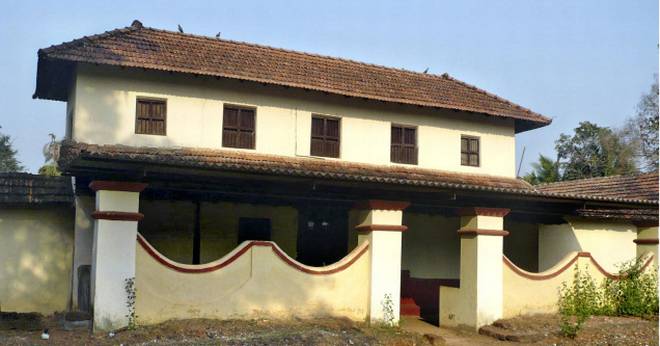You may have heard of the stately mansions of the Chettiars, sprawling over many towns and villages in Chettinad, Tamil Nadu. Ornately decorated, these massive mansions represent the glories of an era bygone. The Guthu Manes of the Bunt community in Mangalore may not share the same fame, but they share the same nostalgia and sense of history.
Guthu houses mean homes of prestige. These beautiful houses are the traditional manor houses of Dakshina Kannada, built to fit the requirements of matrilineal joint families.
Guthu Manes were built in the centre of the land holdings that each family owned.
The architecture of these homes followed Vastu principles. Guthu houses look like a mini temple from the outside. Characterised by sloping roofs with Mangalore tiles and huge courtyards that overlook paddy fields, Guthu houses are a reminder of a bygone era. They symbolised the wealth and prestige of the wealthy landlords who built these houses. Exquisite care was taken to ensure that not only did Guthu houses evoke grandeur but were also built keeping in mind Mangalore’s often oppressive heat and humidity as a coastal region.
The open space in front of the house beyond the main gate, which was called jaal, would typically have a shelter made from woven dried coconut leaves that would serve as protection from the extreme heat. All Guthu houses had a veranda that acted as a sit-out and beautiful doors made from intricately carved teakwood or rosewood. Ornate and exquisitely carved wooden pillars adorned the interiors of the inner courtyard. These pillars upheld a decorated wooden ceiling, which usually had representations of mango and floral designs, foliage, and coin motifs. Solid wooden beams called jantis supported this grand ceiling.
Like many traditional houses, the central portion of the house was reserved for the women of the house. Elaborate rooms were constructed to house deities, and large, spacious bedrooms were typically accessed by a flight of stairs on the first floor.
Guthu houses usually featured a lot of woodwork. Wooden swings where the head of the house sat, chests, cabinets, shelves, chairs, writing desks, reclining chairs and the quintessential vakil bench were all part of these homes. They all featured beautifully intricate carvings, which were sometimes inlaid with ivory.
Like the traditional homes of other communities, Guthu houses were designed and constructed with a delicate balance between functionality and aesthetics. Using locally available resources and expertise to reflect their cultural identity, the Bunt community homes were instances of pragmatic planning and eye for detail. Many of these houses though are now struggling – maintaining them is an effort – and time has taken its toll. Not all Guthu houses are open to the public, but a beautifully reconstructed Guthu house is open to visitors at the Pilikula Nisargadhama in Mangalore. As you drive through the verdant fields that dot Mangalore’s rural landscape, you will occasionally find a few of these magnificent Guthu houses, reposing in the grandeur of the past. Take some time to breathe in the atmosphere of these houses – they are fragile reminders of impermanence, yet living pillars of our heritage.
This article was originally published on www.thehindu.com dated July 5,2017


